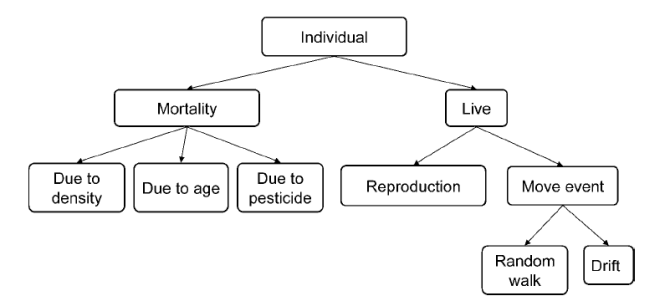MASTEP
MASTEP stands for Metapopulation model for Assessing Spatial and Temporal Effects of Pesticides. The model is a metapopulation model describing the effects and recovery of invertebrates after exposure to pesticides as a result of spray drift.
The model is currently parameterised for the waterlouse Asellus aquaticus but more species with different life-cycle characteristics will be added in 2006. It is able to evaluate the effects on and recovery of the species using the pond, ditch and stream FOCUS scenario. The model can use the FOCUS exposure modelling using the use patterns, the FOCUS spray drift data and the fate model TOXSWA as input for exposure data. The modelled landscape is represented as a lattice of connected cells, which have a dimension of 1 by 1 meter. The structure of the landscapes is defined according to the FOCUS scenarios for pond, ditch and stream. The pond consisted of 30 by 30 cells with an in- and out-flow. The pond and ditch scenarios were 600 cells long, of which a stretch of 100 cells were treated. The model includes processes of mortality, life history, random walk between cells, density dependence of population regulation and, in case of the stream scenario, medium-distance drift of invertebrates due to flow velocity. All parameter estimates currently included were based on expert judgment and the results of a thorough literature review on published information on the ecology of Asellus aquaticus covering the last 50 years.
Demo
For Asellus aquaticus is a demo-model available here.
The processes included in the model were reproduction, mortality, and movement or dispersal, see figure below.
